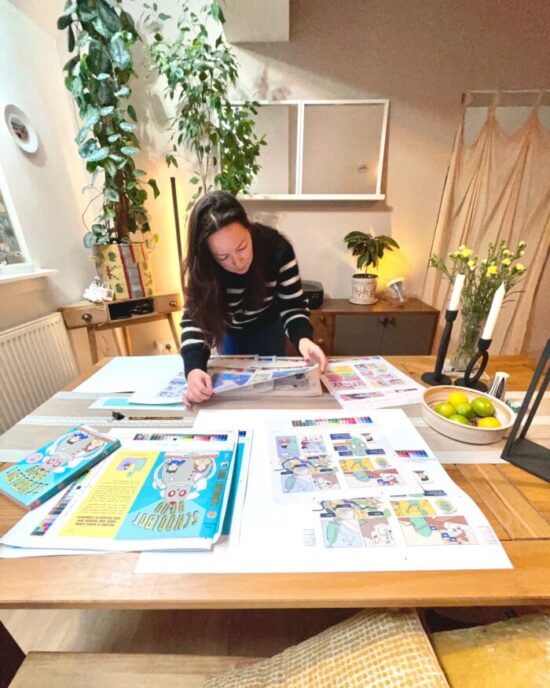Sam Hepburn, a writer and cartoonist based in England, is set to release her debut middle-grade graphic novel, Schoolbot 9000, in July 2025. The story centers on 11-year-old James Gordon, who becomes increasingly frustrated as robots infiltrate various aspects of his life—from drones resembling bugs to dog-like automatons at the park and a HomeBot babysitter. The situation escalates when his cherished middle school teachers are replaced by Schoolbots, prompting James to take action. In this interview, Sam delves into her creative process and the themes explored in Schoolbot 9000.
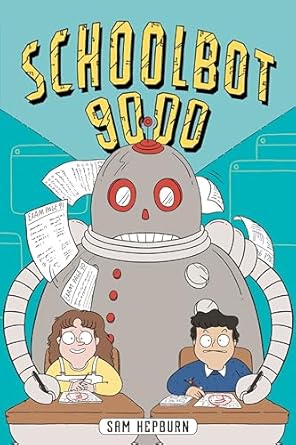
Can you tell us a bit about yourself and the journey to having your debut children’s book published?
I started as a creative copywriter, coming up with ideas for TV and radio commercials, newspaper ads, that kind of thing. I did that for a few years before I decided that it wasn’t enough of an outlet for me. I started drawing little cartoons about my life, and experimented with finding “my style”. Initially, I tried to draw what I thought I “should” draw. Beautiful feminine pictures, realistic animal portraits, cool graphic posters. But I wasn’t very good at creating the “polished” artwork that I thought I was supposed to make. My drawings always had a scrappy, silly vibe. And I didn’t really like creating one-off illustrations; I kept wanting to make a story out of it. Because the silliness and the stories came so easily to me, eventually I realised that this was the thing I loved to do and decided to lean into it.
My first big project was Welcome to Agency X, a comic strip that got picked up by The Star newspaper (in Malaysia, where I was living at the time) and was read by over a million people. As a daily multipanel strip, it was grueling! But it definitely gave me the cartooning bug. After that, I pitched my cartoon Questionable Quotebook to Universal Uclick (GoComics) and started gaining a small following there. I was posting a lot of cartoons to my Instagram when I was contacted by an agent who had seen my stuff and wanted to know if I had any book ideas in the works. I didn’t at the time, but I later realised that the comic strip I’d been trying to pitch for syndication wasn’t actually a comic strip, it was a book. The agent loved it, so we signed a contract and started working on it. The draft that I originally called “Schooldazed” (as in, dazed and confused by chaotic happenings at school!) is now a graphic novel called Schoolbot 9000.
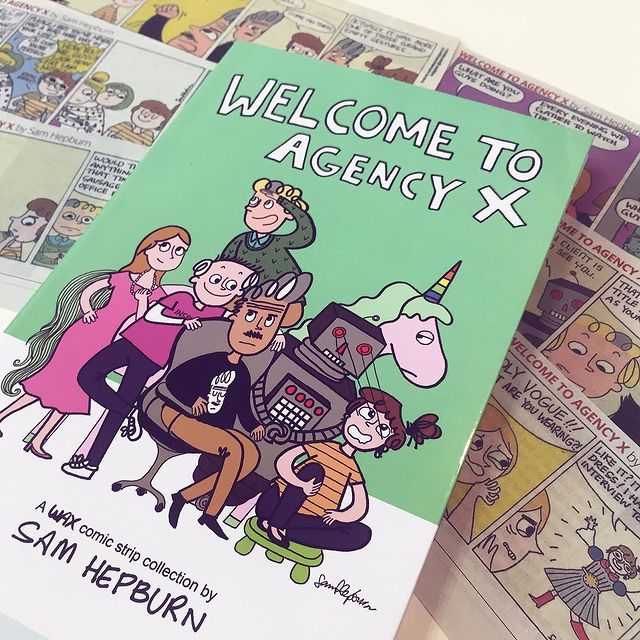
Was Schoolbot 9000 inspired by AI being prevalent in the news or was there a particular moment or event that gave you the idea?
I first started using AI-powered robots as a leitmotif in my comic strip Welcome to Agency X. The main antagonist was a robot called Deadline Bot 3000, which as you might guess, was always pushing the poor creatives toward burnout. Yes, it was probably autobiographical. So I’ve always loved the robot as a metaphor for a certain type of person or situation where there’s no negotiations, no nuance, no empathy, do what you’re told and don’t ask questions. The robot is like a chasm that stands between a human being and trying to be understood.
The last copywriting job I took was developing articles for a big tech company. I would interview entrepreneurs, inventors, programmers, scientists – and translate their technical achievements into relatable and easy to understand stories. The tech company’s role was to speed up, enhance, and multiply these achievements, but the way I saw it, there was always some collateral damage in departments being downsized and people losing their jobs. I started to think about things like business goals versus business ethics, and what happens when tech moves faster than we expect or can mitigate. Around the time I was having these ideas, ChatGPT came out, the AI conversation completely took over, and my story suddenly became really timely.
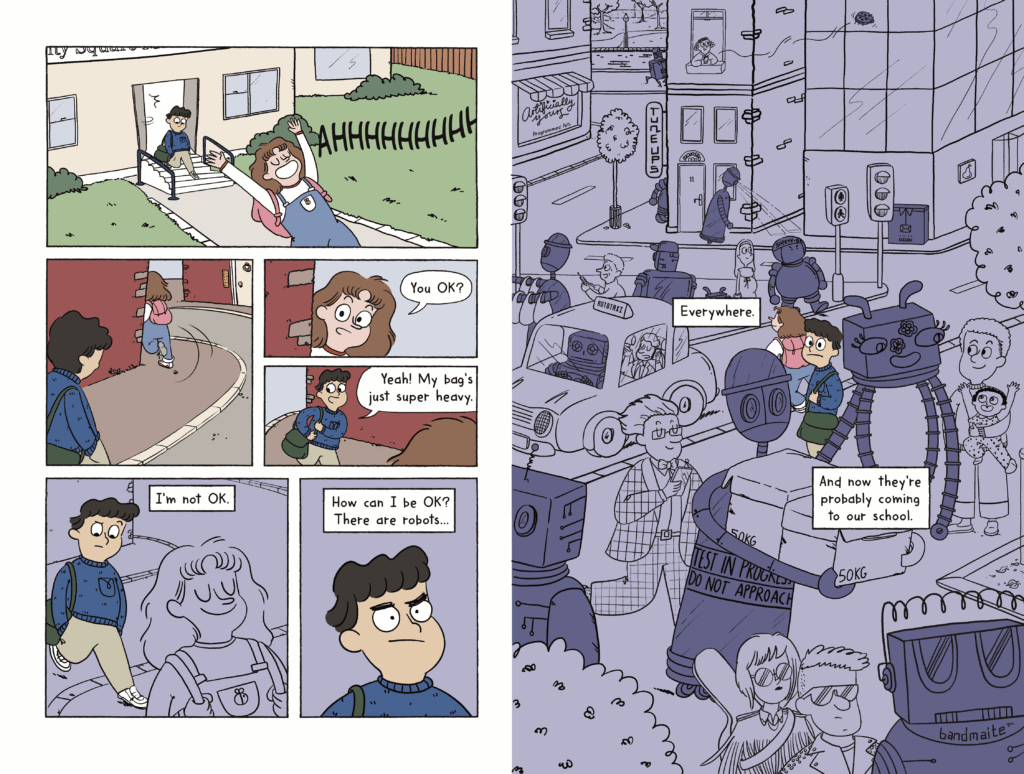
What were your favourite parts to write for Schoolbot 9000? Personally, I did particularly enjoy the interactions between James and his HomeBot.
I loved crafting the emotional moments. There’s a lot of complexity and depth in our relationships with others and with ourselves, and I find that so interesting to explore. James and his mom have a complicated relationship where it’s not always easy for them to show each other love and understanding, and I think that’s very realistic and true. James is a very interesting character to me because he’s at that pre-teen age where there’s a lot of internal conflict and confusion and figuring stuff out developmentally – there’s the added element of his dad passing away too – and he doesn’t really know the best way to express or deal with it all yet. HomeBot is also a fascinating character to me. Without giving too much away, HomeBot is very liminal and I love writing that kind of character. I hope James and HomeBot will prove to be an iconic duo.
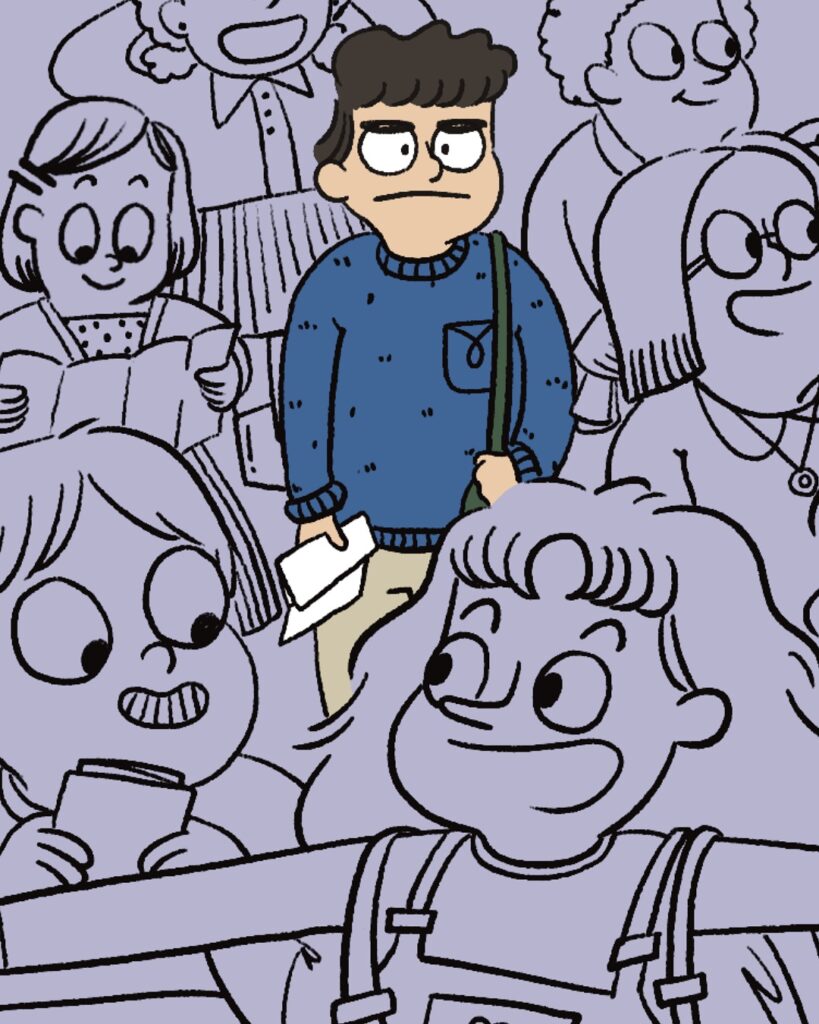
You have produced both a strong storyline and eye-catching illustrations for Schoolbot 9000. I’m always slightly jealous of people with that level of creativity! Do you have a favourite part of the creative process? To be even meaner with that question, when it comes to creating books, if you could only do one of drawing or writing for the rest of your life, which would you choose?
Thank you so much! I love that moment of creating a character or writing a line and I just know in my depths that it’s right. It’s perfect. This isn’t something that happens all the time, and in fact I think I need a lot of time, thought, contemplation, and space to create something in a moment that feels perfect. But when it does happen, the feeling is magic and the rest of it just comes alive and starts tumbling out. If I could only write or draw for the rest of my life, I would definitely write. It’s where I started in my career, so I’ve been a writer a lot longer than I’ve been drawing and it’s the best way I know to express myself and project my voice.
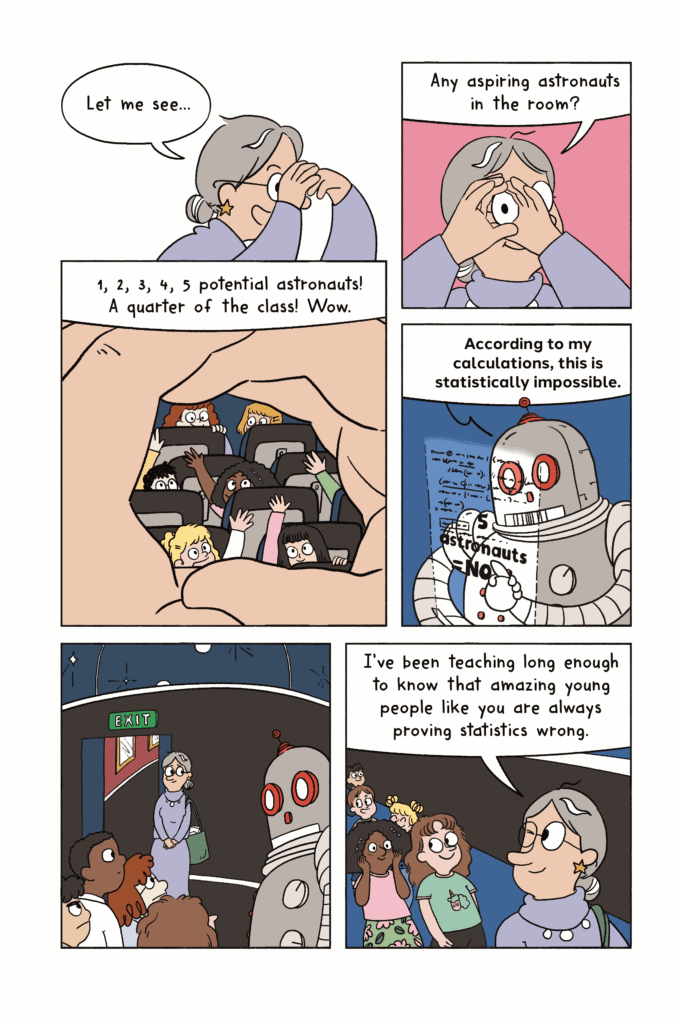
There are a lot of people who have the dream of having their first children’s book published. From your recent experience of going through this process with Schoolbot 9000, what advice would you give them?
“Find your voice” is advice that’s so often given out, it’s almost a cliché. But it’s so competitive out there that figuring out who you uniquely are and what unique story you have to tell is probably the most important thing you can do. Once you do have it, don’t ever let go. No matter what social media says. Take trends with a pinch of salt! Instead, keep listening to your own voice and honing it, expressing it in different ways and strengthening it. Technique is something that can be learned, and imitated (sadly now more than ever!) but your voice is filled with the richness of your own lived experience, a beautiful combination that belongs to you alone.
Keep learning. Stay teachable and humble. Learn to recognise what others are doing well. Especially learn to recognise when things aren’t working for you, and tweak them. Whether it’s your story, your art style, your process, or something else. “Kill your darlings” is a ruthless favourite that I often repeat to myself when writing and editing. Of course, I never actually kill my darlings, I just hide them in a different folder to revisit later. Overwhelmingly, however, once I make the decision to prune and move on, I hardly ever go back to that folder. I usually write something that I like better. And I think that proves the efficacy of the motto.
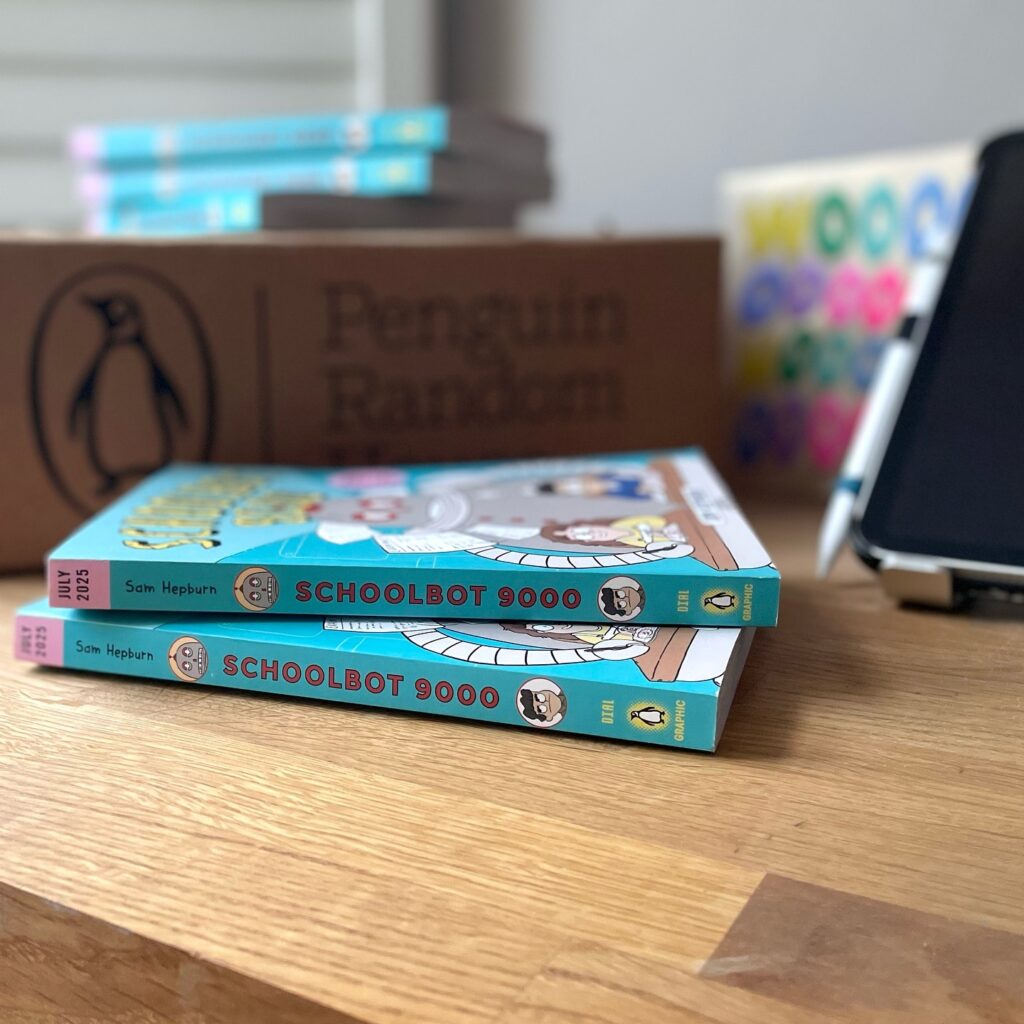
Which other authors do you particularly enjoy reading and would recommend for people to try?
I deeply enjoy the essays of humorist David Sedaris. He has a way of talking about things with equal amounts nonchalance and outrage, and I find it hilarious. I love the work of graphic novelist Tillie Walden. The worlds she creates in her artwork are vast and stunning, but the moments she writes are often very quiet and introspective, and I find that contrast beautiful. Persepolis by Marjane Satrapi is one of my favourite graphic novels. Frank Herbert’s Dune was amazing to me when I discovered it in college, and I still marvel at the depth of world building in those books. I’m currently reading Robert Jordan’s The Wheel of Time and loving it for similar reasons.
Schoolbot 9000 is a fantastic debut! Are you able to give us any hints about your next project? And will we always see you work with graphic novels or are chapter books or picture books a future possibility?
I’m so happy you enjoyed it! I’m currently working on the second book in the series, and I’m excited to show readers more of James’ world. I can say that there will definitely be more of the HomeBot-James interactions that you enjoyed. I have a couple of other story ideas at the front of my mind that I’m hoping to crack. One is sci-fi, the other takes us all the way back to Victorian times. I don’t know whether they’ll be graphic novels or chapter books yet, but I’m open to the possibilities. I would like to do a picture book provided I could subvert the genre.
